#about spells
Text
Might and Magic in Songs
“Therefore I say that we will go on, and this doom I add: the deeds that we shall do shall be the matter of song until the last days of Arda.”
I have many thoughts about this line spoken by Fëanor in response to the Doom of Mandos. It's so fascinating that this is the part that Fëanor focuses on, and it's very much in line with everything else that Tolkien wrote about Middle-earth. I love it.
At the moment (and this might change the longer I think about it) I believe the main aspects connected to this statement are memory & history, and art and its relation to magic, subcreation and power in general.
My ramblings about this got a bit too long, so more under the cut…
Memory and history
This is probably the easier one to explain: throughout Tolkien's stories in Middle-earth and Aman, songs play a major part in remembering history. All cultures have various songs, sometimes shared ones even, and they use them to remember and also learn from the past. It keeps the past alive, it keeps past deeds relevant, it connects what people do in the future with what people have done in the past. Sam said about this:
“But that’s not the way of it with the tales that really mattered, or the ones that stay in the mind. Folk seem to have been just landed in them, usually – their paths were laid that way, as you put it. But I expect they had lots of chances, like us, of turning back, only they didn’t. And if they had, we shouldn’t know, because they’d have been forgotten.”
Both Sam and Frodo draw courage from stories like this, it helps them understand why they are doing what they are doing. These songs are therefore a great inspiration.
Remembering stories from the past is relevant to all cultures in Middle-earth, but it's especially important to the Elves, even in the First Age. Finrod in his conversation with Andreth says that memory is the “great talent” of the Elves, and that it is both a heavy burden and a great wealth. He also states that “the life and love of the Eldar dwells much in memory”.
So it's no surprise that Fëanor puts such a high value on being remembered in song. If they wouldn't continue with their quest, from his perspective, how would the song go, how would the world remember this part of history? The Silmarils, Fëanor's most precious creations – stolen by Morgoth and never retrieved? Finwë, the King of the Noldor and Fëanor's father whom he loved even more than the Silmarils – killed, his death never avenged, and his murderer never brought to justice? For someone like Fëanor that's hardly an acceptable memory to create for eternity.
Magic: art and subcreation
What interests me even more is the connection of art, subcreation and magic in Tolkien's work, and all the implications for Fëanor's statement. Tolkien has described art as a form of subcreation several times, and within his works the most prominent example is the Ainur singing the world into being (with Eru's guidance and power of course).
Art is of course a way to create things, even in our own world, but in Middle-earth they can have a stronger impact on the world. Simple words can hold great power, even when spoken by people who don't have magical abilities by themselves. Aragorn for example uses songs when healing the wounded. Frodo was able to call Tom Bombadil for help through words alone – so a large part of the power for this call must come from the words and the song itself, because Frodo doesn't usually have that kind of magic. Both Frodo and Sam use the name of Elbereth several times to great effect, against the Nazgûl or Shelob.
But my favourite examples when it comes to the power of songs are Tom Bombadil's songs against the Barrow-wights, and Finrod's song contest with Sauron.
Tom Bombadil against the Barrow-wight is a fascinating part in The Lord of the Rings. The Barrow-wight has captured the hobbits, and when it sings its song Frodo at first “felt as if he had indeed been turned into stone by the incantation”. The words used in the incantation are “grim, hard, cold words, heartless and miserable”. They are about cold hands and hearts, the failing of sun and moon and the death of the stars, dead sea and withered land, and the dark lord.
When Frodo calls Tom for help, he uses a very different image: in his song he calls Tom by water, wood, hill, reed, willow, fire, sun and moon – many things that Tom seems to value or that could be connected to him.
Tom himself constantly uses songs, by himself, together with his wife, just to pass time or to tell stories. In many of these songs he sings about himself, and I keep wondering if this is in part why his songs are so powerful: in his songs Tom is constantly building a picture of himself, he is defining himself as he wants to. When he comes to the Barrow-downs, he describes himself once more before asserting that his songs are stonger:
“Old Tom Bombadil is a merry fellow,
Bright blue his jacket is, and his boots are yellow.
None has ever caught him yet, for Tom, he is the master:
His songs are stronger songs, and his feet are faster.”
The contest of Finrod and Sauron in song is the other famous example of such extraordinary magic. Like Tom and the Barrow-wight, both evoke powerful images with their words. Of Finrod it says in the song:
“Backwards and forwards swayed their song.
Reeling and foundering, as ever more strong
Thû's¹ chanting swelled, Felagund fought,
and all the magic and might he brought
of Elfinesse into his words.”
And for a while this works. But eventually, the history and memory of the Noldor is also Finrod's weakness: the Elvenland is not completely free of stain – it is marred by the First Kinslaying at Aqualonde.
“Then the gloom gathered: darkness growing
in Valinor, the red blood flowing
beside the sea, where the Gnomes² slew
the Foamriders, and stealing drew
their white ships with their white sails
from lamplit havens. The wind wails.
The wolf howls. The ravens flee.
The ice mutters in the mouths of the sea.
The captives sad in Angband mourn.
Thunder rumbles, the fires burn,
a vast smoke gushes out, a roar -
and Felagund swoons upon the floor.”
This is the part where the song fails in power and where Sauron gains the upper hand, leading to Finrod collapsing before Sauron's throne.
A matter of song
I am sure that Fëanor wasn't necessarily thinking of someone like Finrod to begin with when he talked about being remembered in song, but the bitter irony is that his and his people's deeds in Alqualonde were remembered in song, and it strenghtened the enemy and weakened the Noldo that was fighting them. But who knows, given Celegorm's and Curufin's attitude towards Finrod's quest, it might be that this is even a desired outcome for them?
No matter the outcome – is this what Fëanor had in mind? That whatever he and his people would do, it would be such a powerful memory that naming it in song would have such an impact on the effectivess of the song?
Tom Bombadil can evoke is own name, Frodo and Sam call to Elbereth, Aragorn draws his sword with the name Elendil on his lips – but who would call Fëanor's name? This really made me think if anyone of his sons or his people did so…
Footnotes
¹ Sauron
² Noldor
#Tolkien#Middle-earth#LOTR#The Lord of the Rings#The Silmarillion#SILM#Feanor#Tom Bombadil#Sauron#Barrow-wights#about songs#about spells#or more accurately#ramblings#my posts#repost because poll posts can't be edited :(#essay
8 notes
·
View notes
Text

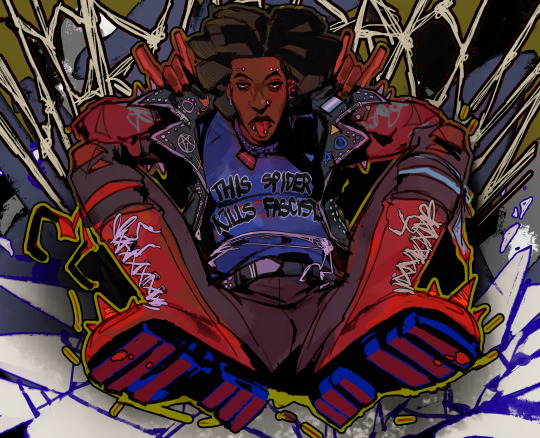
hobie motherfuckin' brown!!!!!!
#i am so normal about hobie brown (lie)#what the hell has this movie done to me#i have taken art drugs#cant. stop. drawing him. oh my god#its hard to tell but the webbing behind him spells out his name#my anticapitalist king. im sorry but i /will/ be purchasing a poster of you#hobie brown#spiderverse#across the spiderverse#spiderman#spiderman across the spiderverse#stillindigo art
66K notes
·
View notes
Text
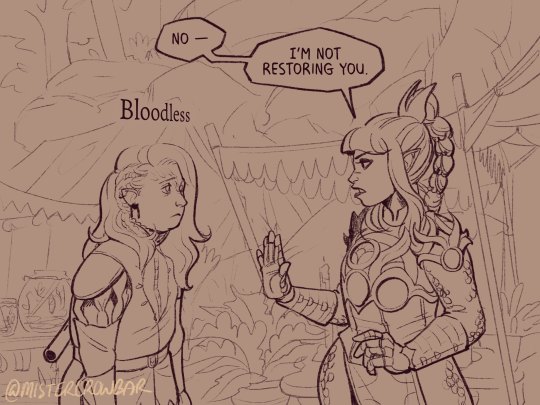
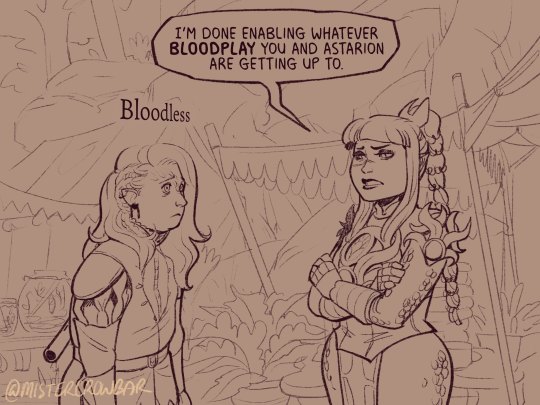


Sorry not sorry Shadowheart, from every Astarion romancer ever.
#bg3#bg3 fanart#baldur's gate 3#shadowheart#c:aldiirn#sketch#doodle comic#crowbart#i know about the amulet in the grove#and aldiirn did learn lesser resto for himself later#so playthru 1 i relied on sheart for restoring him#and because i didnt want to use her in the main party there was this whole ritual of dismissing someone#adding her#having her cast the spell only to tell her to stay in camp again right after#the olden days before swapping was made easier#it was so tedious lol
9K notes
·
View notes
Text
magic system where “dark magic” and “light magic” are literal terms - dark magic consumes photons, making an area around the spell visibly darker, sometimes to an Extreme extent, and light magic releases photons.
because of this most dark mages tend to work in very brightly-lit areas (either artificial light or outside in the daytime) to fuel their spells and wear and use lightly coloured clothes and tools so that they’re easier to see in the dimness their spells create, whereas light mages wear heavy, sometimes leaden robes (depending on the work being done) and the magical equivalent of welding masks to protect themselves from what can be an extreme amount of light, and sometimes other kinds of electromagnet radiation!
needless to say this is incredibly confusing for anyone unfamiliar with the culture
#light mage about to unleash an absurd amount of infrared radiation wearing those heat suits volcanologists use:#of course many light mages dabble in dark magic as extra layers of protection#and vice versa - dark mages using light magic to light up their work spaces#though most specialize#sadly all theories of perpetual spell craft - light spell powering a dark spell#have been proven to not be feasable
49K notes
·
View notes
Text
i would say that, mentally speaking, i'm in a good place right now! physically of course, the crows continue their chanting,
#'weaving spells with beaks and talons' whatever u wanna call it. sounds like chanting to me#anyway yes. that is a thing that is happening#yes i am aware of it. stop asking.#am i taking steps to stop this thing from happening? how. how the fuck do u suppose i should go about doing that?#yea i've done some dumb shit in my life#no i am NOT about to go INTERFERING with the CROWS
8K notes
·
View notes
Text
I know I'm a broken record at this point about how functionally useless editing software has become since AI integration (read: corrections are now being suggested based on user input, not actual grammar rules), but there's nothing quite like a piece of writing software flagging something you've written as an error, and then when you click on it, it can't tell you what the error is.
Just that it thinks something is wrong.
It's like the writing equivalent of the "you better watch out!" meme.
Watch our for what? Nobody knows, but you better watch out!
#this time it's Word's native editor flagging Vlad's name as incorrect#not that it's spelled wrong#just that it's 'incorrect'#how is it incorrect?#it cannot tell me#the vibes are apparently just off#the vibes are wrong#but that's not stopping Word from yelling about it
17K notes
·
View notes
Text
within the past hour the NYPD raided Columbia university where no press is currently being allowed btw
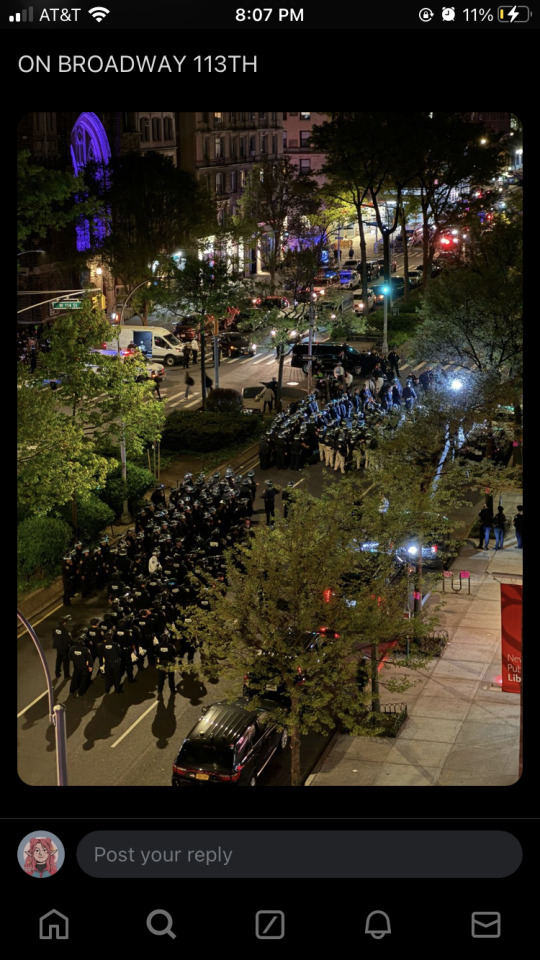
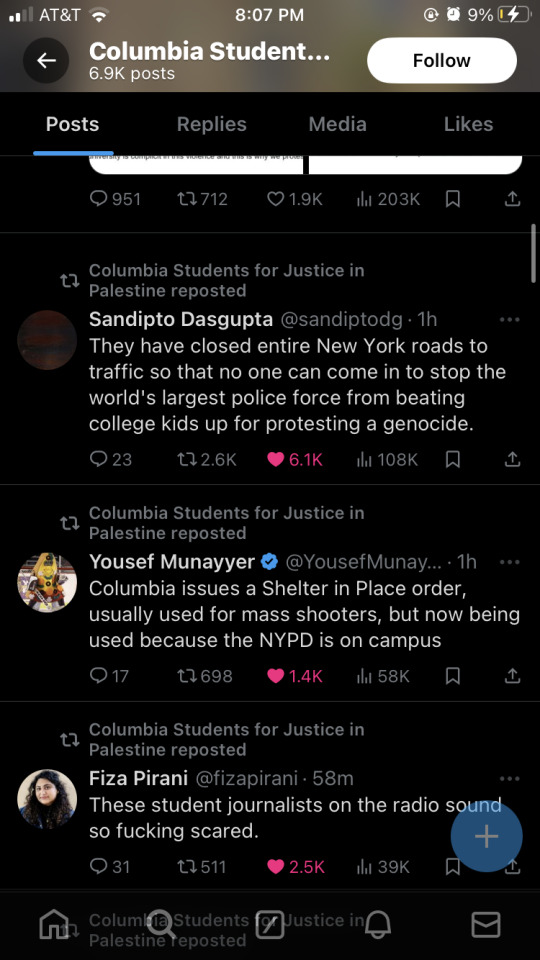



#ongoing situation#i don't know the events of about the last 10 minutes#gaza solidarity encampment#hindi hall#free palestine#new york#columbia university#columbia#tags updated for spelling
6K notes
·
View notes
Text
What does life in North Korea look like outside of Pyongyang? 🇰🇵
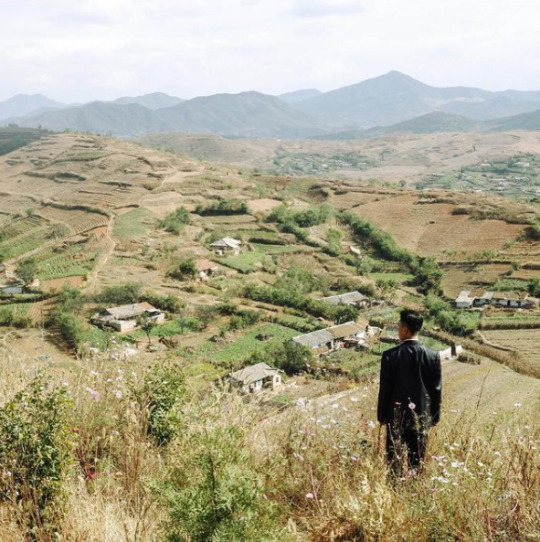
Hey, I'm back again with a very scary "tankie" post that asks you to think of North Koreans as people, and to consider their country not as a cartoonish dystopia, but as a nation that, like any other place on earth, has culture, traditions, and history.
Below is a collection of pictures from various cities and places in North Korea, along with a brief dive into some of the historical events that informs life in the so-called "hermit kingdom."
Warning: very long post
Kaesong, the historic city
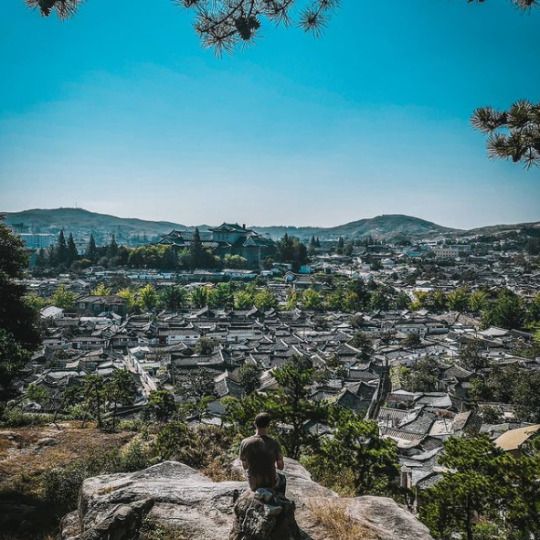
Beginning this post with Kaesong, one of the oldest cities in Korea. It's also one of the few major cities in the DPRK (i.e. "North Korea") that was not completely destroyed during the Korean war.
Every single city you'll see from this point on were victims of intense aerial bombardments from the U.S. and its allies, and had to be either partially or completely rebuilt after the war.
From 1951 to 1953, during what has now become known as the "forgotten war" in the West, the U.S. dropped 635,000 tons of bombs over Korea — most of it in the North, and on civilian population centers. An additional 32,000 tons of napalm was also deployed, engulfing whole cities in fire and inflicting people with horrific burns:
For such a simple thing to make, napalm had horrific human consequences. A bit of liquid fire, a sort of jellied gasoline, napalm clung to human skin on contact and melted off the flesh. Witnesses to napalm's impact described eyelids so burned they could not be shut and flesh that looked like "swollen, raw meat." - PBS
Ever wondered why North Koreans seem to hate the U.S so much? Well...
Keep in mind that only a few years prior to this, the U.S. had, as the first and only country in the world, used the atomic bomb as a weapon of war. Consider, too, the proximity between Japan and Korea — both geographically and as an "Other" in the Western imagination.
As the war dragged on, and it became clear the U.S. and its allies would not "win" in any conventional sense, the fear that the U.S. would resort to nuclear weapons again loomed large, adding another frightening dimension to the war that can probably go a long way in explaining the DPRK's later obsession with acquiring their own nuclear bomb.
But even without the use of nuclear weapons, the indiscriminate attack on civilians, particularly from U.S. saturation bombings, was still horrific:
"The number of Korean dead, injured or missing by war’s end approached three million, ten percent of the overall population. The majority of those killed were in the North, which had half of the population of the South; although the DPRK does not have official figures, possibly twelve to fifteen percent of the population was killed in the war, a figure close to or surpassing the proportion of Soviet citizens killed in World War II" - Charles K. Armstrong
On top of the loss of life, there's also the material damage. By the end of the war, the U.S. Air Force had, by its own estimations, destroyed somewhere around 85% of all buildings in the DPRK, leaving most cities in complete ruin. There are even stories of U.S. bombers dropping their loads into the ocean because they couldn't find any visible targets to bomb.
What you'll see below of Kaesong, then, provides both a rare glimpse of what life in North Korea looked like before the war, and a reminder of what was destroyed.

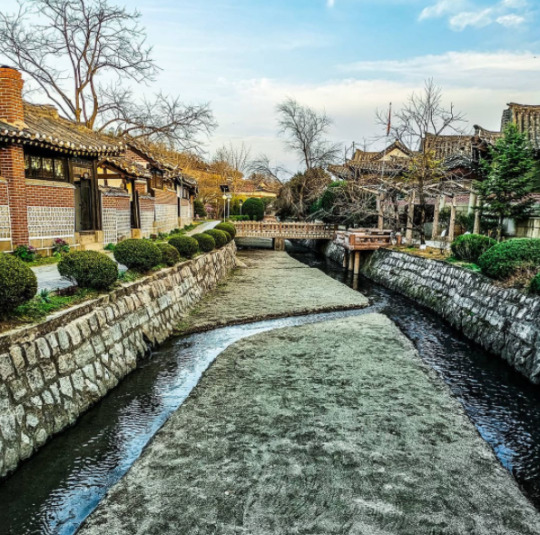

Kaesong's main street, pictured below.
Due the stifling sanctions imposed on the DPRK—which has, in various forms and intensities, been in effect since the 1950s—car ownership is still low throughout the country, with most people getting around either by walking or biking, or by bus or train for longer distances.
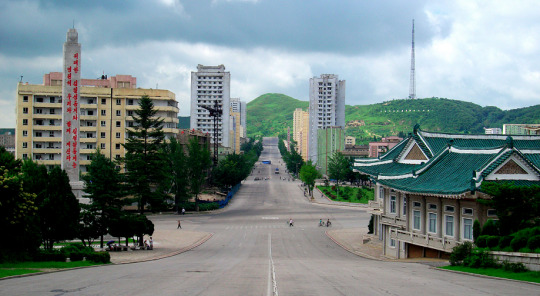
Kaesong, which is regarded as an educational center, is also notable for its many Koryŏ-era monuments. A group of twelve such sites were granted UNESCO world heritage status in 2013.
Included is the Hyonjongnung Royal Tomb, a 14th-century mausoleum located just outside the city of Kaesong.
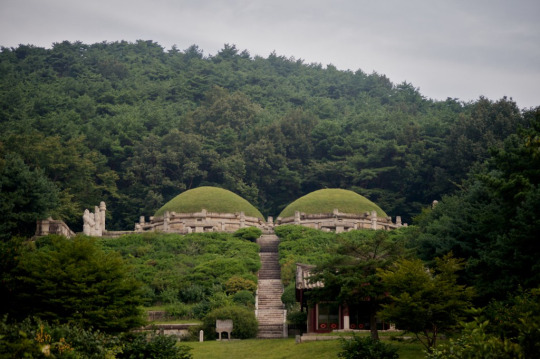
One of the statues guarding the tomb.
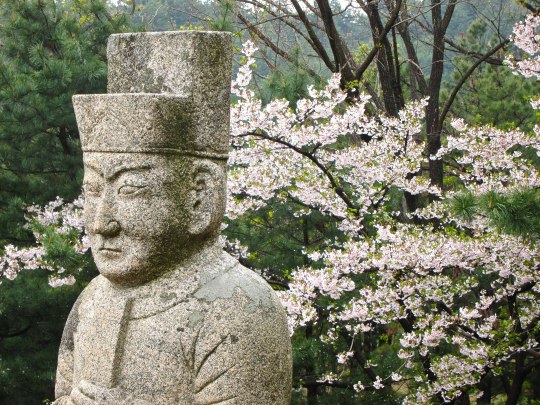
Before moving on the other cities, I also wanted to showcase one more of the DPRK's historical sites: Pohyonsa, a thousand-year-old Buddhist temple complex located in the Myohyang Mountains.

Like many of DPRK's historic sites, the temple complex suffered extensive damage during the Korean war, with the U.S. led bombings destroying over half of its 24 pre-war buildings.
The complex has since been restored and is in use today both as a residence for Buddhist monks, and as a historic site open to visitors.


Hamhung, the second largest city in the DPRK.
A coastal city located in the South Hamgyŏng Province. It has long served as a major industrial hub in the DPRK, and has one of the largest and busiest ports in the country.
Hamhung, like most of the coastal cities in the DPRK, was hit particularly hard during the war. Through relentless aerial bombardments, the US and its allies destroyed somewhere around 80-90% percent of all buildings, roads, and other infrastructure in the city.
Now, more than seventy years later, unexploded bombs, mortars and pieces of live ammunition are still being unearthed by the thousands in the area. As recently as 2016, one of North Korea's bomb squads—there's one in every province, faced with the same cleanup task—retrieved 370 unexploded mortar rounds... from an elementary school playground.
Experts in the DPRK estimate it will probably take over a hundred years to clean up all the unexploded ordnance—and that's just in and around Hamhung.
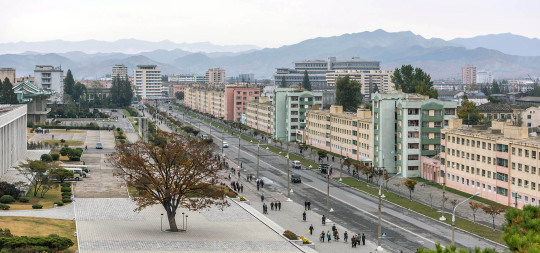

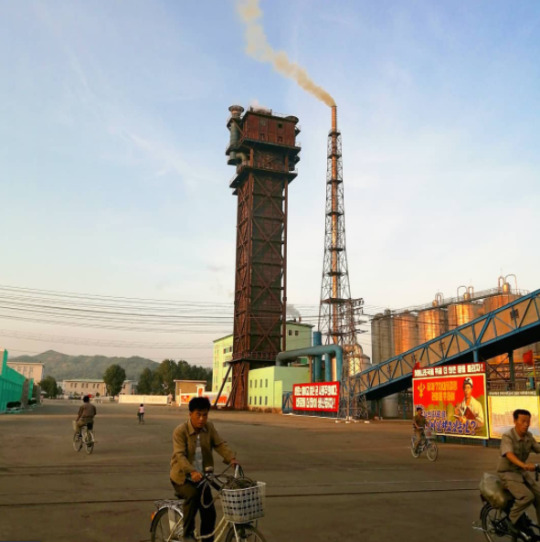
Hamhung's fertilizer plant, the biggest in North Korea.
When the war broke out, Hamhung was home to the largest nitrogen fertilizer plant in Asia. Since its product could be used in the creation of explosives, the existence of the plant is considered to have made Hamhung a target for U.S. aggression (though it's worth repeating that the U.S. carried out saturation bombings of most population centers in the country, irrespective of any so-called 'military value').
The plant was immediately rebuilt after the war, and—beyond its practical use—serves now as a monument of resistance to U.S. imperialism, and as a functional and symbolic site of self-reliance.
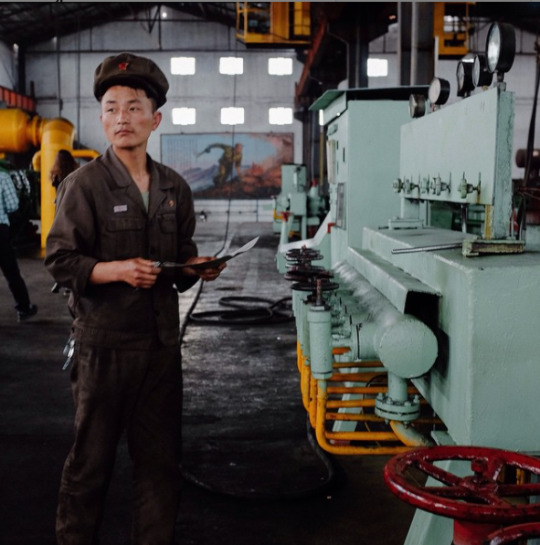
Chongjin, the third largest city in the DPRK.
Another coastal city and industrial hub. It underwent a massive development prior to the Korean war, housing around 300,000 people by the time the war broke out.
By 1953, the U.S. had destroyed most of Chongjin's industry, bombed its harbors, and killed one third of the population.
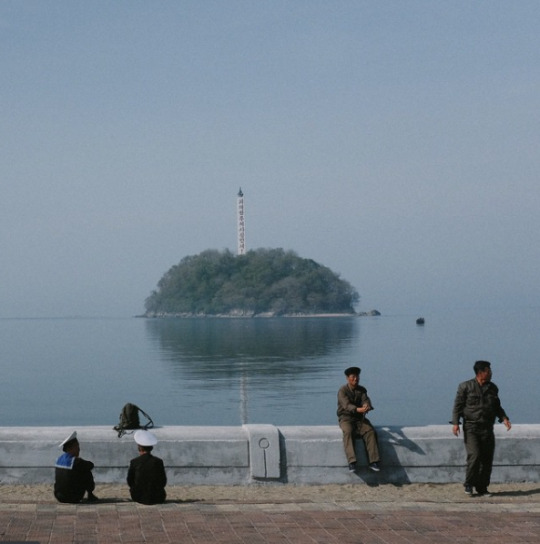
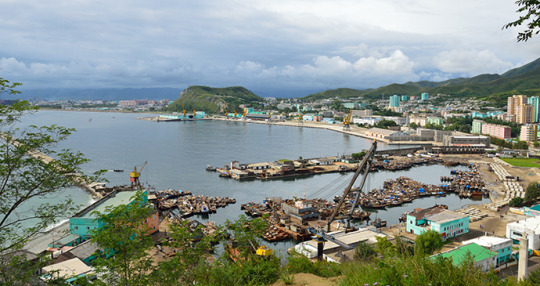

Wonsan, a rebuilt seaside city.
The city of Wonsan is a vital link between the DPRK's east and west coasts, and acts today as both a popular holiday destination for North Koreans, and as a central location for the country's growing tourism industry.
Considered a strategically important location during the war, Wonsan is notable for having endured one of the longest naval blockades in modern history, lasting a total of 861 days.
By the end of the war, the U.S. estimated that they had destroyed around 80% of the city.
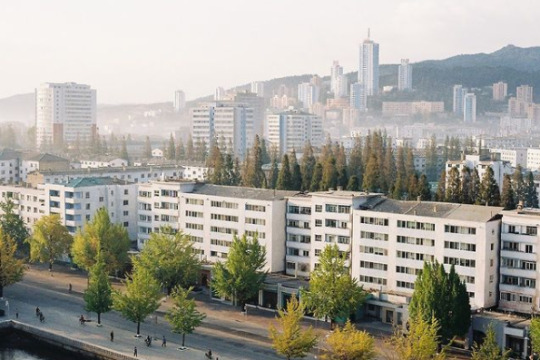

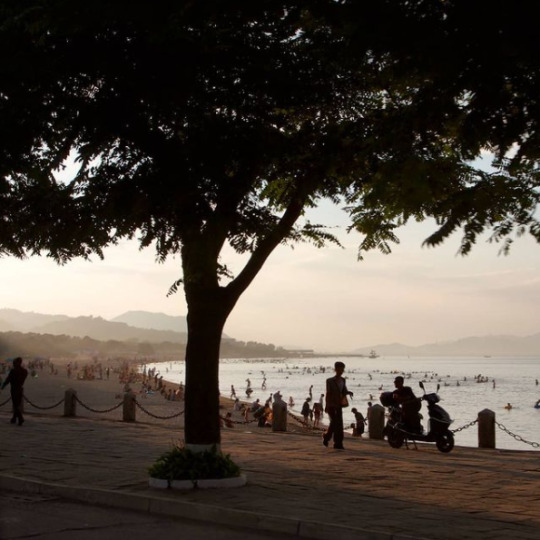

Masikryong Ski Resort, located close to Wonsan. It opened to the public in 2014 and is the first, I believe, that was built with foreign tourists in mind.
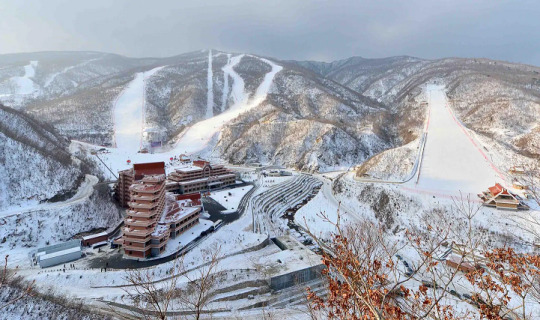
Sariwon, another rebuilt city
One of the worst hit cities during the Korean War, with an estimated destruction level of 95%.
I've written about its Wikipedia page here before, which used to mockingly describe its 'folk customs street'—a project built to preserve old Korean traditions and customs—as an "inaccurate romanticized recreation of an ancient Korean street."
No mention, of course, of the destruction caused by the US-led aerial bombings, or any historical context at all that could possibly even hint at why the preservation of old traditions might be particularly important for the city.
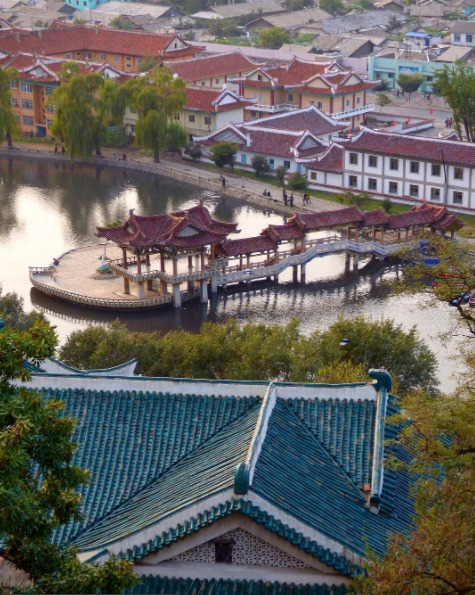

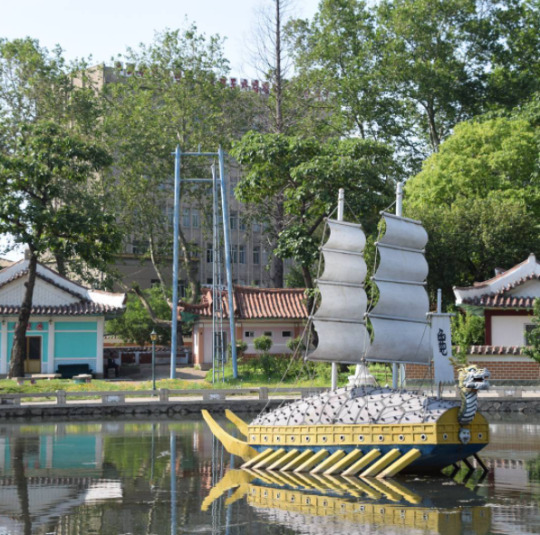
Life outside of the towns and cities
In the rural parts of the DPRK, life primarily revolves around agriculture. As the sanctions they're under make it difficult to acquire fuel, farming in the DPRK relies heavily on manual labour, which again, to avoid food shortages, requires that a large portion of the labour force resides in the countryside.
Unlike what many may think, the reliance on manual labour in farming is a relatively "new" development. Up until the crisis of the 1990s, the DPRK was a highly industrialized nation, with a modernized agricultural system and a high urbanization rate. But, as the access to cheap fuel from the USSR and China disappeared, and the sanctions placed upon them by Western nations heavily restricted their ability to import fuel from other sources, having a fuel-dependent agricultural industry became a recipe for disaster, and required an immediate and brutal restructuring.
For a more detailed breakdown of what lead to the crisis in the 90s, and how it reshaped the DPRKs approach to agriculture, check out this article by Zhun Xu.

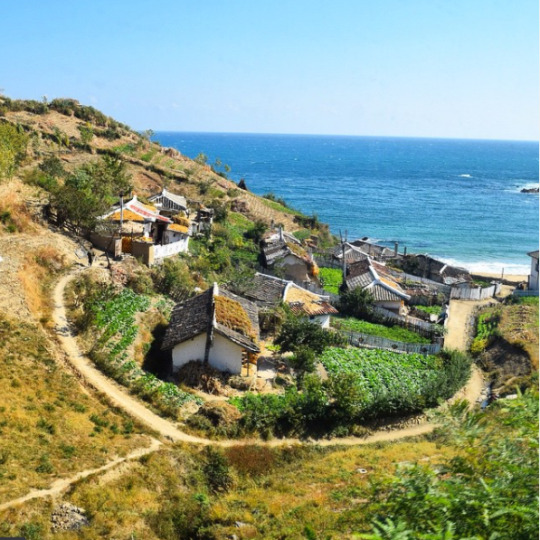
Some typical newly built rural housing, surrounded by farmland.
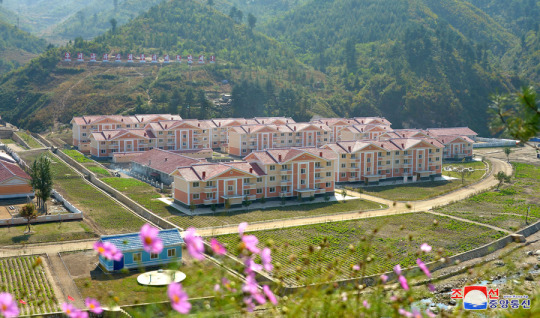
Tumblr only allows 20 pictures per post, but if you want to see more pictures of life outside Pyongyang, check out this imgur album.
#dprk#north korea#i've had this post unfinished in drafts for almost a year#also sorry about the spelling and potential formatting issues it's a nightmare to edit at this point#it was literally just meant to be a collection of picture and then the writing just sort of happened#enjoy the brief heritageposts history lesson i guess
6K notes
·
View notes
Text
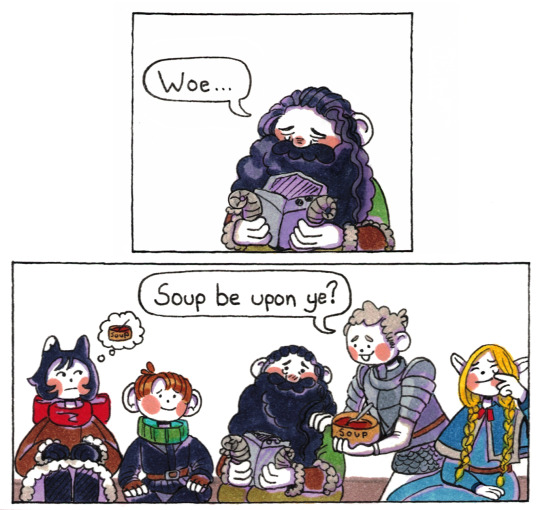
Soup solves everything.
#dungeon meshi#dungeon meshi spoilers#Senshi#izutsumi#chilchuck tims#laios touden#marcille donato#THE SOUP CHAPTER HAS BEEN ANIMATED#I have so many thoughts about senshi's backstory and how much that experience has shaped who he is.#This is such a powerful moment because it makes it clear how *stuck* senshi has been because of his trauma.#Up until now he has been a mystery! He's the chef guy! Don't worry about his apparent reclusiveness from society!#Don't worry about his intense need to make sure 'the young ones are fed'!#Senshi still has a lot of healing but this was the moment he could finally forgive himself.#This chapter is so important to me because sometimes you truly do need to face the most terrifying things to move past them.#This joke here is a bit too narrow to be funny for the masses...but mdzs fans know.#MDZS :handshake: Dungeon Meshi: Soup moment.#Laios and Jiang Yanli have a powerful magic call "Eat some soup and maybe you'll feel better'#That is also a spell you can cast upon yourself. Go eat some soup and you will feel better. Merry Soupmas everyone.#One more week of Thistle Thursdays....I'm not ready to say goodbye B*(
5K notes
·
View notes
Text

shadowheart casts guidance
#saw jokes about the way the icon looks + it being a touch spell and....yeah#also think i have settled on a shads design now so im gonna try be consistent#we'll see how long that lasts#lae'zel#shadowheart#karlach#wyll ravengard#astarion#gale dekarios#bg3#shadowzel#dusty art#bg3 comic
4K notes
·
View notes
Text

do you guys ever think about how Wyll is introduced as an archetypal fantasy hero, but then it turns out he’s a warlock, who made a pact with a devil. Do you ever think about how Ansur is described as this fantastical dragon of myth, but then when you find him, he’s turned into an undead monstrosity. Do you think about how when Wyll does the right thing, he is punished to become more monstrous. Do you think about how as Wyll’s warlock powers grow, his spells get more horrific. Do you think about how Ansur was killed by his closest friend. Do think about how Wyll was cast out by the most important person in his life. do you guys ever think about Ansur and Wyll.
#tw mild gore#bg3#wyll ravengard#bg3 ansur#baldur's gate 3#bg3 spoilers#ask to tag#wahoo had a lot of fun with the colors in this#we could have had it alllllll wyll shouldve been able to bond with the dragon#like ough how do you think wyll feels about casting spells like eyebite and blight#the ending of his quest is so.... lackluster#i like the emperor i think hes really interesting but like... he does kinda swoop in and take over the end of wyll's personal quest...
7K notes
·
View notes
Text
gotta be honest and say it's insane to me that a bunch of people 'misremembered' nelson mandela dying in prison in the 80s even though he lived to become the president of south africa in the 90s and instead of thinking 'wow, i really should learn a bit more about international politics outside of north america and europe because not knowing such a basic fact like this about one of the most influential political figures of all time is kind of embarrassing', they became convinced that this was proof that parallel realities exist and they were having memories of an universe where mandela died in prison somehow. that's presumptuous on a level i can barely conceive of
#the term is mostly used to talk about false memories nowadays but still. it's just so ridiculous to me#like i'd say there's a small difference in importance between the berenstain bears being spelled with an a#and fucking nelson mandela dying in in the 80s during the apartheid. like just maybe
37K notes
·
View notes
Text

Spider-Man: No Way Home (2021) Post-Credits Scene (Colorized)
Been wanting to draw a thing including that cursed MCU Peter photo for a while.
Tumblr ate the image in my last post so here it is again.
#I can't stop laughing at the cartoon man being pissed off at literal human being Tom Holland#miguel was building meter on that “beefing with teenagers" thing for about a year#my art#across the spiderverse#miguel o'hara#atsv fanart#atsv miguel#spider man#spider man 2099#atsv#spider man no way home#no way home#spider woman#jessica drew#atsv jessica#peter b parker#atsv peter b parker#spiderman#marvel cinematic universe#mcu spider man#a spell that affects ‘everyone who knows peter parker is spider man’ is a problem if that description applies to 100% of your members#Miguel really regretting everyone in the society being on a first name basis
4K notes
·
View notes
Text

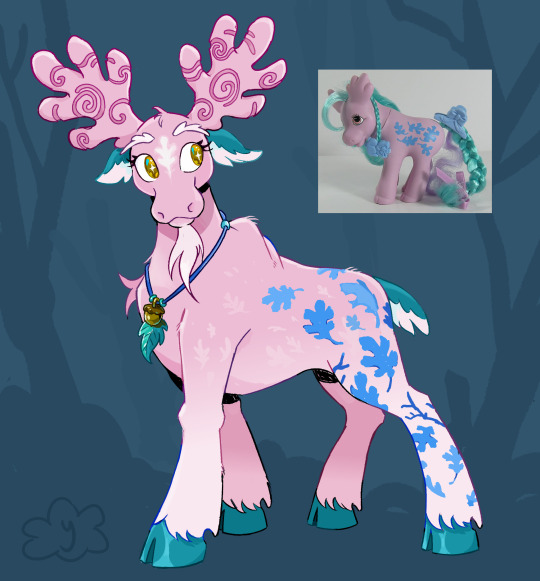
hear me out: moose in mlp
#mlp#my little pony#my little pony friendship is magic#twilight sparkle#oakley the moose#any other oakley fans out there#one of my FAVORITE mlp toys ever#i wish they would reissue her oakleys go for like 250$ on ebay :sob: i guess it is a rare G1 toy#oh also i hc that in mlp some horned species like moose can make special carvings on their horns to “Access” magic#but they cant use uncarved horns to cast spells#unicorn and kirin horns have natural magical markings on them so they dont need to do it#my version of oakley's magic is blue like her leaves : )#i am also a huge truther about putting cutie marks on non pony characters
9K notes
·
View notes
Text

i love the DLC man
#elden ring#miquella the unalloyed#promised consort radahn#I’ve been thinking about how despite all the talk of age of compassion… Miquella’s first spell as a god is an offensive incantation#with a wide af damage radius 💀💀💀#meanwhile Marika who built her age upon violence… her spells are all healing and defense buffs#and her first spell as a God is a little tree that heals a wide area#she was still trying to heal her ppl to the bitter end AND gunning for revenge. there’s a kind of heartbreaking honesty to it#the cruel irony in the DLC story is crazy#really show how badly Miq had strayed from his original path after forsaking Trina#then that meme pops in my head ajshsjhsjhs#now i do think the vow is two-way btw Radahn just got cold feet near the end#the only thing i dont like about the DLC is i cant draw jokes without explaining I LOVE THESE CHARACTERS i think their actions are valid !!#like having to pull up a whole lore presentation slide for this#yes i think it's funny as hell that Miq did show Radahn why he should not fuck around and find out
2K notes
·
View notes
Text
tumblr users will have the most inaccessible, unreadable, low contrast, flashing carrd you can possibly imagine, with a dni full of insider acronyms with no translation and numerous link buttons labelled with cryptic captions, and then go ahead and put “ableists dni and kys!” on that carrd
#yeah i’m bitter about carrds becoming so hostile to disabled people#nobody with vision issues or photosensitivity or processing issues or epilepsy or memory issues could possibly read your carrd#small changes like proper colour contrast between background and text can make a world of difference in making your page accessible#even just spelling out the acronyms in your dni or mentioning WHERE a mysterious link will actually lead is so helpful#i see so many links that are just random literary quotes that turn out to lead to a mandatory dni. how would anyone know that??#txt#accessibility#1000
7K notes
·
View notes